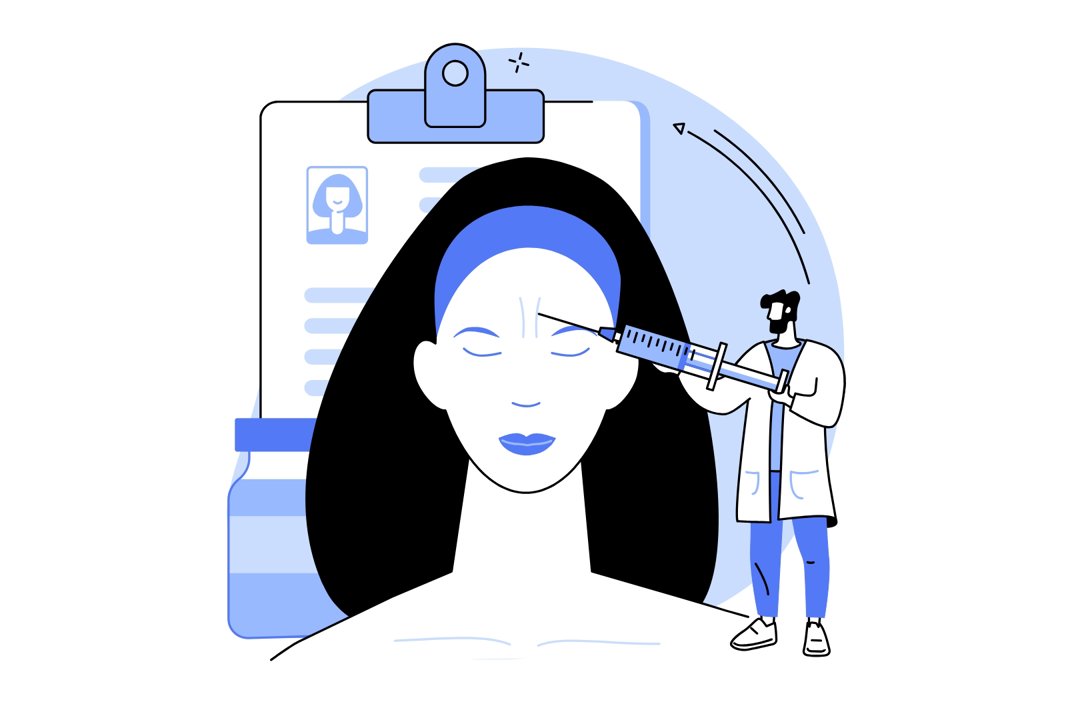
- Compliance
Don’t Overlook These Risks of Providing Aesthetic Services in Arizona
If you're thinking of offering aesthetics care at your medical practice this article is intended to help you gain a better understanding of the legal requirements governing Arizona medical aesthetic practice.
Our Risk Team consultants are seeing an uptick in consultation requests concerning the risks of providing aesthetic services. In this article, we share four examples of questions we have received from Arizona medical practices, followed by a discussion of applicable laws, rules, and regulatory opinions.
Whether you are a physician, APRN, or PA thinking about, or currently providing, aesthetics care, this article is intended to help you gain a better understanding of the legal requirements governing Arizona medical aesthetic practice. MICA’s Risk Team strongly recommends that nurses, as well as physicians and other aesthetic practitioners in Arizona, read the Medical Aesthetic Procedures Advisory Opinion issued by the Arizona Board of Nursing (ABON).1
Scenario #1
We are a primary care practice that also offers some aesthetic services. Our aesthetician is going on maternity leave next month. We were thinking we could cross train our front desk person or our medical assistant to perform aesthetic procedures (including microneedling, dermaplaning, and chemical peels) while she is gone.
Arizona Law Prohibits Unlicensed Personnel from Performing Aesthetic Procedures
The services offered by this primary care practice, including microneedling, dermaplaning, and chemical peels, are all considered cosmetic aesthetic procedures by the Arizona Board of Nursing and the Arizona Cosmetology Board. To perform any of these procedures in Arizona, an individual must be licensed, with appropriate training and demonstrated competence in specific procedures.2 Arizona licensing requirements prohibit this medical practice from simply “cross-training” unlicensed staff members to perform these services.
Arizona law governing the cosmetology profession defines “aesthetics” to include any of the following when done for “cosmetic” or beautification purposes:
-
- hair removal by means other than electrolysis or threading,
- massaging (excludes therapeutic massage and manipulations),
- cleansing,
- stimulating,
- manipulating,
- exercising,
- beautifying or
- applying oils, creams, antiseptics, clays, lotions or other preparations, either by hand or by mechanical or electrical appliances.3
- hair removal by means other than electrolysis or threading,
For a list of specific procedures that are considered “aesthetics” and require appropriate licensing, see the Arizona Cosmetology Board’s Substantive Policy Statement, Scope of Practice for Licensed Aestheticians and Cosmetologists, and ABON’s Medical Aesthetic Procedures Advisory Opinion.
Arizona Cosmetology laws specifically prohibit unlicensed personnel from performing aesthetic procedures or advertising/claiming to be an aesthetician or engaged in the business of aesthetics. These laws also prohibit employers from allowing unlicensed personnel to perform aesthetic procedures.4
Scenario #2
I am a family medicine physician. I am the medical director for a long-term care facility, and I also have my own primary care practice. I am considering having an RN do botulinum toxin (Botox) injections in my office. She will be an independent contractor, not my employee. I will purchase the Botox solution and give it to her for injections. What is my liability?
Prescribing, Nursing Scope of Practice, and Supervision in Arizona
This scenario raises concerns about compliance with prescribing and scope of practice/supervision requirements as follows:
-
- Scope of Practice: ABON’s Medical Aesthetic Procedures Advisory Opinion says it is within an RN’s scope of practice to inject Botox, but first the nurse needs a prescriber’s order.
- Prescribing: The physician cannot legally limit his role in this situation to just “buying some Botox” for the RN. Since Botox requires a prescription, the physician must provide an order for each patient the RN injects. Unless the physician has a pre-existing physician-patient relationship, he/she must conduct and document an examination of the patient prior to prescribing (or risk medical board discipline).5
- Supervision: ABON’s Advisory Opinion says the RN injecting Botox must be supervised by a prescriber with “medical/surgical training” and “specific knowledge, skills, and abilities in medical aesthetics/cosmetic procedures.” This prescriber must also be available “by telecommunication methods for consultation and/or referral,” licensed in Arizona where the patient is located, and “able to assess a patient, when requested by the nurse or patient, within a medically reasonable timeframe.”
- Vicarious Liability: In the event of an adverse event, the physician has medical professional liability exposure even if he does not “employ” the RN. He would likely be named as a defendant in any lawsuit, alongside the RN. He owes a duty of care to the patient and has a legal responsibility to properly supervise the nurse.
- Scope of Practice: ABON’s Medical Aesthetic Procedures Advisory Opinion says it is within an RN’s scope of practice to inject Botox, but first the nurse needs a prescriber’s order.
Scenario #3
An APRN employed to provide primary care at one practice, also served as the Medical Director for a separate, aesthetics-only practice. At the telephonic request of an RN at the aesthetics practice, the APRN wrote a prescription for dermal fillers for an aesthetics patient. The APRN did not see or examine the patient before prescribing the fillers, and the available medical history was limited. The RN performed the injections. The patient later developed cellulitis at the injection site. The APRN examined the patient and wrote additional prescriptions to treat the cellulitis. After the patient filed a complaint with her insurance company, the payor opened a quality-of-care investigation and required the APRN to respond and defend her care.
The Arizona Nursing Board’s Advisory Opinion Applies to this Scenario
Scenario 3 is similar to Scenario 2. Scope of practice regulations prohibit an RN from injecting dermal fillers without a prescriber order. Like physicians, APRNs are required by law to conduct and document a patient examination prior to prescribing, unless there is a pre-existing prescriber-patient relationship. Prescribers that fail to comply risk licensing board discipline.6
ABON’s Medical Aesthetic Procedures Advisory Opinion sets forth additional specific duties applicable to both the RN and the APRN in this case. The Opinion uses a three-tiered system to classify cosmetic procedures according to patient risk. Cosmetic injectables are considered Level III (Advanced) procedures. According to the Opinion, procedures using cosmetic injectables require:
-
- Documented informed consent;
- Procedure to be performed by an APRN or RN who has successfully completed procedure-specific training and demonstrated competency (see section II of the Opinion for specific course of instruction requirements);
- Procedure may not be performed by an LPN, aesthetician, or laser tech; and
- Procedure must be performed under the supervision of a prescriber with medical/surgical training and specific knowledge, skills, and abilities in cosmetic treatments, as described in more detail above under Scenario 2.
- Documented informed consent;
The Opinion also confirms that APRNs may serve as medical directors for aesthetics practices, overseeing procedures performed by laser techs or nurses qualified to perform certain cosmetic procedures. According to the Opinion, an APRN serving in this role must:
-
- Maintain education, competency, and certification for cosmetic procedures performed by other personnel the APRN is supervising;
- Remain responsible for review, approval, and maintenance of written policies for all office procedures;
- Be available to staff during business hours; and
- Provide guidance, leadership, and training to staff.
- Maintain education, competency, and certification for cosmetic procedures performed by other personnel the APRN is supervising;
Scenario #4
A primary care physician in a small town serves as the collaborating physician for a PA in another town. The PA, certified by the licensing board to practice collaboratively, has her own primary care practice and recently added a laser after completing multiple training courses. The PA will be performing laser aesthetics procedures. The collaborating physician does not have laser or aesthetics experience. An APRN is serving as the medical director for the PA’s aesthetics practice.
MICA Risk Team Guidance for PAs, Physicians, and APRNs
MICA’s Risk Team provided the following recommendations in this scenario:
-
- Physician: To limit exposure to licensing board investigations and malpractice lawsuits, consider writing your collaboration agreement with the PA to exclude collaboration on the aesthetics portion of the practice. The physician can competently collaborate on primary care issues but lacks experience in aesthetics or laser procedures.
- PA: Obtain a second collaborating physician with experience in laser aesthetic procedures. Register the laser as required by Arizona law.7 If you later hire a certified laser technician, remember that Arizona law requires a licensed health professional (APRN, physician, PA) to provide “direct supervision” of laser technicians when techs are performing cosmetic procedures other than hair removal. Direct supervision means the supervising health care professional is present in the same facility where and when the tech is working. When techs are performing hair removal, the supervisor must be available for indirect supervision (i.e., via telecommunication).8
- APRN: Read and adhere to ABON’s Medical Aesthetic Procedures Advisory Opinion. Pay particular attention to requirements for APRN medical directors.
- Physician: To limit exposure to licensing board investigations and malpractice lawsuits, consider writing your collaboration agreement with the PA to exclude collaboration on the aesthetics portion of the practice. The physician can competently collaborate on primary care issues but lacks experience in aesthetics or laser procedures.
[1] ABON says its advisory opinions are “an interpretation of what the law requires” and, while not law, they are “more than a recommendation.”
[2] A.R.S. § 32-574(A)(1); Arizona Board of Nursing Medical Aesthetic Procedures Advisory Opinion
[3] A.R.S. § 32-501(2) & (6)
[4] A.R.S. § 32-574(A)(2), (4), & (12)
[5] A.R.S. § 32-1401(27)(tt)
[6] Arizona Administrative Code R4-19-511(D)(5)
[8] A.R.S § 32-3233(D) &(H) and A.R.S. § 32-3231(5)-(6)

